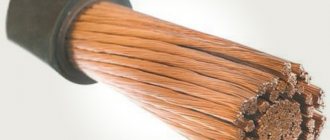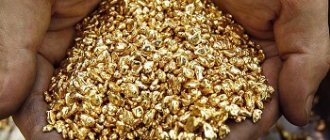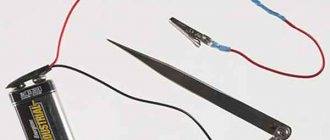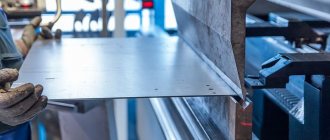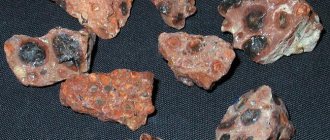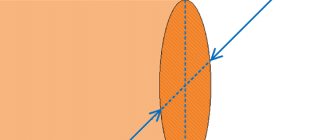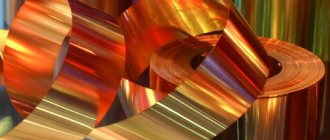With the right approach, the search and subsequent recycling of scrap metal can become a good source of additional income. When planning to engage in such activities, you need to pay special attention to preparation. In this regard, the question of places that are promising from a search point of view is especially important. There is an opinion that all metal suitable for delivery and freely available has long been disposed of. But it is not so.
If we recall the active pace of development of industry and agriculture during the Soviet period, we can very positively assess the prospects for the process of searching for scrap ferrous and non-ferrous metals. A large amount of abandoned scrap still lies both on the surface of the earth and in the soil at a shallow depth. In order for each trip to be as efficient as possible from an economic point of view, you should determine in advance a list of places where you need to look for scrap metal.
Source of additional income
Metal recycling can reduce production costs, reduce the consumption of natural resources and solve the problem of environmental pollution. Finding scrap metal can be fun for anyone. This is both an exciting process and a source of additional income. You can collect it for free. The cost at which scrap metal is accepted at recycling centers varies depending on the region. This type of income brings income to people who collect, sort and deliver it to recycling points, regardless of the territory; searching for scrap metal in Siberia is no different from the territory of the Far East or other parts of the country.
Searching for scrap metal may raise certain questions for a beginner. First of all, you need to decide where to search.
It is worth mentioning the places where scrap metal can be collected constructively:
- in agricultural and farm fields;
- in forests;
- at abandoned landfills;
- on the territory of old repair bases;
- in closed and abandoned factories and enterprises;
- in landfills;
- within the city limits;
- in the countryside.
To find out where to get scrap metal, just study the contents of your own storage rooms, garages, sheds and other rooms where broken appliances are stored.
How to look for scrap metal
Equipment and items useful for finding scrap metal
Searching for scrap metal can generate serious income. At the stage of preparation for this type of activity, it is necessary to clearly understand some features of the search.
- In abandoned settlements, in fields and forests, at old landfills, shooting ranges and beaches, some iron inevitably ends up under a layer of soil. Therefore, a metal detector is needed to search for scrap metal.
- It is not difficult to search for ferrous metal with the simplest devices, characterized by budgetary cost and ease of use. Having decided on the search bridge, it is necessary to inspect the area. This will allow you to collect all the scrap lying on the surface of the ground.
- The next step will be to search for scrap iron using a metal detector. The device will sound a sound indicating the presence of metal objects in the soil.
- The most convenient time to search for scrap metal is early spring. The period when the snow has already melted and the grass has not yet had time to grow is the most stressful time for those who collect ownerless scrap metal.
- The absence of grass makes it easy to collect scrap lying on the ground, as well as use the device to detect metal.
- Separately, it is necessary to note search magnets, which allow you to find and retrieve scrap metal from the bottom of rivers, ponds, lakes, wells and fountains. Reservoirs store a lot of scrap metal, which has accumulated at the bottom for decades. Modern technical equipment will make it possible to easily detect and remove ownerless scrap iron from water or soil.
When planning to collect scrap metal, you must remember that you can only collect and hand over abandoned iron.
Searching for scrap metal in the forests
The territory of Russia stores a large amount of military equipment in its forests. A terrible legacy remains from the time of the battles. Many of these “cemeteries of military equipment” have long been abandoned. It is unprofitable to remove and dispose of such waste. The solution to environmental problems in clearing forest areas of scrap metal lies on the shoulders of enthusiasts and people involved in the collection and delivery of recyclable materials to collection points. Scrap metal in the forest may be unsafe due to the possibility of undisposed ammunition.
Abandoned factories
Often a real mecca for enterprising owners of metal detectors in suburban areas, however, for the most part, all abandoned factories near cities have long been empty or welded shut, so you will have to go to more remote places. It's worth it - you can find a lot of useful second metal in abandoned enterprises. These can be spare parts, production parts, old machines, installations, pipes, wires - all this often does not even need to be searched using the device. However, as practice shows, the depths of such places are also full of pleasant surprises.
Scrap metal collection in rural areas
It is advisable to search for metal waste on the territory of abandoned collective farms and villages, on farms in the ground and along the sides of agricultural roads. Vehicle repairs were carried out on site, and parts were thrown out on the side of the road. To search for abandoned villages, it is better to acquire maps from the 50-60s of the 20th century, compare them with the current location of settlements, and pay attention to the territories that turned out to be abandoned. Scrap metal can be found in former cowsheds or farm equipment repair shops.
Abandoned fields
Here you are likely to find the remains of agricultural machinery - from plows and seeders to tractors and trucks. Such finds do not happen often, but in most cases they are distinguished by their solid weight and impressive volume, for example, the minimum weight of a tractor caterpillar track is about 15 kg. Garbage dumps It's not a very pleasant-smelling activity, but it's extremely effective. Every day people “recycle” metal waste, and with the help of a metal detector it is not at all difficult to find it in city landfills. The main thing is not to displease those who live in these places permanently.
Metal in the city
You can collect scrap metal in the city at public transport stops, car or household appliance repair shops. Construction sites, abandoned houses, and garage cooperatives are also rich in it. Garbage containers contain household appliances, electrical wiring, and metal pipes discarded by citizens. Scrap metal in urban areas can even be found in parks and streets, as well as in areas left after demolition of residential buildings, especially in the suburbs or private sector.
In the city limits it is much easier to find places where to get non-ferrous scrap metal, abundant in brass and aluminum. Copper can often be found in trash containers. It comes from electrical wires, some decorative items or utensils, and building components. You shouldn’t think about where to get copper for scrap metal if there are abandoned metallurgical enterprises nearby.
Finding scrap requires time, effort and special equipment. Metal detectors vary in power and size. They allow you to detect scrap metal in a field or forest, but there are devices that can find metal products at depth. As an alternative, powerful magnets (from 1.2 tons) are suitable.
You will need transport for the removal of scrap metal and an area where it will be sorted and processed for recycling. Better to use a shed. It is important to sort the found scrap, separate ferrous metals from non-ferrous ones, and get rid of excess rubber or plastic parts in the found items. Unassembled metal will not be accepted for recycling.
Sources of non-ferrous scrap metal
It makes sense to look for non-ferrous metals in refrigerators, tube TVs, and washing machines. With proper dismantling, a lot of copper can be extracted from them. For example, the motor of an old refrigerator may contain from 1.5 to 3 kg of copper.
- Any electric motors, cables and wires, transformers and starting devices deserve attention.
- Taps, valves, shut-off equipment and other elements of heating systems and water supply systems serve as a source of brass, bronze and other copper alloys.
After dismantling the found components, assemblies and units of household appliances, the secondary raw materials must be sorted and then cleaned of insulation and other non-metallic impurities. This will increase profits from the delivery of scrap metal.
Choosing a metal detector
This is where the journey of any recycled metal collector should begin. Which metal detector is best for finding scrap metal? In fact, almost any - brand and price do not play a special role. Even the simplest and cheapest device can find metal underground. Moreover, by choosing an expensive professional metal detector, you significantly increase its payback period. Is it worth it?
An inexpensive model for 5,000-6,000 rubles will pay for itself in the near future: for this you only need to hand over about a ton of metal. But if you bought an expensive metal detector for 40-50 thousand, then consider for yourself how much effort and time you need to spend to “recoup” this money.
Some will argue that professional metal detectors are better and cost more for a reason. Of course, their search radius is larger, they search deeper, and they distinguish between ferrous and non-ferrous metals very well. The question here is whether these characteristics are important to you. After all, if recycled metal is collected for delivery, then its type does not matter. The depth of occurrence also does not play a special role. Ferrous metal occurs in large sizes, and, as a rule, even the weakest metal detector can “feel” it.
Search without georadar or metal detector
Test pits and metal probes will help you find valuable scrap in the ground without a georadar or a metal detector. An effective search is also possible with the help of a rod, a pendulum, and search magnets.
Soil rustling
Drilling the soil means manually digging a trench using a shovel. The soil on the site is cut to a depth of 1.5-2 m, the direction of the dig can be longitudinal or circular. The work is carried out in the warm season, since manual labor is very labor-intensive, and it is almost impossible to dig frozen soil by hand. To avoid soil shedding, trenches are dug at a distance of at least 0.5 m from each other. For ease of searching, the depth of the recess should be 1.5 times the width.
Working with a metal probe
The efficiency of searching for scrap will be increased by a search probe - a moderately light and rigid metal pin up to 2 m long. Scrap is detected by immersion or puncture of a layer of soil. The method is suitable if the soil is loose and soft, which is typical for swampy lowlands, plowed fields, and areas where excavation work has recently been carried out. The probe can be made independently or made to order from a hexagon or fittings.
Vine made of metal rods
The vine is a popular tool for finding places to dig wells, which is also used to detect scrap in the thickness of the earth. You can buy the tool or make it yourself. It consists of a pair of thin rods made of aluminum, steel or copper wire, bent in an L shape at an angle of 90°. The parameters of the rods with a wire cross section of 4-6 mm are approximately 340-400 mm by 80-100 mm.
The working principle of the vine:
a) L-shaped rods become an antenna that captures electromagnetic waves, which indicates ground anomalies: voids, metal objects;
b) for work, the rods are picked up so that they are parallel to each other, are not clamped, but can rotate freely in different directions;
c) holding the device in their hands, begin to move along the perimeter or diagonal of the area;
d) if an anomaly is detected in the soil, the ends of the device will rotate 45-60o, no matter in which direction;
e) they begin to dig in the place where the vine indicated.
-FOOTNOTE-
Note! Searching with a vine is effective in summer. Snow covering the ground in winter significantly weakens and screens the signal of electromagnetic radiation.
Search pendulum
A spherical pendulum made of wood, a neutral metal, will tell you how to find scrap metal. A simplified option is to make a product from plastic, thick cardboard, then cover it with foil. A sphere with a diameter of 200-300 mm is suspended on a cotton thread 800-120 mm long. How to work with a pendulum:
- A sphere with foil acquires the ability to capture electromagnetic waves. The principle of searching for scrap is based on this.
- Before use, check the functionality of the device. The pendulum is placed above the sheet of metal, moving away or bringing it closer until rotation begins.
- If you plan to search for scrap steel, take a sheet of steel for inspection. When a pendulum is prepared to detect gold, silver, a gold or silver object is taken and tests are carried out on them.
—FOOTNOTE—
Important! The length of the thread is selected individually, depending on the metal that you plan to search for.
Magnets for detecting scrap metal
To search for ferrous metal scrap in a pond, river, lake, or any aquatic environment, one- and two-sided search magnets are ideal. They are placed in the water, moving on foot or by boat, attracting small and large objects from the bottom.
By the way! Single-sided magnets are convenient for vertical searching from a slope, boat or bridge. Double-sided products are more suitable for casting from the shore, after which the load is pulled back on a cable.
The type and size of search magnets may vary. The holding force, depending on the parameters, is 80-600 kg. The magnet design is the same:
- galvanized body, protecting against corrosion and mechanical damage;
- the core is made of neodymium, the top is a three-layer nickel-copper coating;
- one or two eye bolts.
Note! The cost of a neodymium magnet depends on the size and holding force. The average price of models capable of lifting 300 kg is 3300-3500 rubles, 600 kg – 6300-6500 rubles.
Safety precautions
Searching for scrap metal is, of course, an exciting activity, but it is also difficult and unsafe. Follow safety precautions both when searching and when loading found metal objects. Do not load large, heavy items using the tilting method, and be sure to put the car on the handbrake when loading.
When cutting metal, do not forget about gloves and safety glasses. If you find closed metal containers of unknown purpose, do not disassemble them - there may be flammable gas inside. It’s not worth risking your health and even your life; it’s better to hand over suspicious objects as ferrous metal without disassembling them.
When going to construction and industrial landfills, choose shoes with durable, thick soles. In such places there are nails and other sharp objects that can easily injure you.
Sanding and bayoneting with a metal pin
Effective search results can be obtained as a result of sequential removal of soil to a depth of 200-300 mm. There are two methods of digging holes: longitudinal or circular. In the first case, search engines dig 2-3 longitudinal trenches and carefully examine everything found and, based on the results, determine the feasibility of further search. With the circular method, a trench with concentric outlines is dug.
To speed up work and reduce the amount of excavated soil, you can use a thin metal rod. They pierce the soil with it and, if a solid object is found, they dig it up. If a sufficiently large number of items are found, they proceed to excavation work. Increased strength of the rod can be provided by a hexagonal shape or strong steel metal reinforcement.
Metal detector settings
Even the best metal detector for finding scrap metal will be useless if you don’t know how to operate it or have the settings incorrectly set for operation. The optimal frequency will be 3 kHz. Inexpensive metal detectors have a coil operating frequency of 6.5 kHz, which is also suitable for searching. But high-frequency metal detectors with parameters of 10 kHz and higher are undesirable for collecting metal: due to the accuracy in finding small objects, their depth suffers.
Before work, do not forget to set the “All metals” mode, otherwise your device will not respond to all types of secondary metal.
Abandoned forges and forges
Where to look for ferrous metal with a metal detector, except in and around abandoned forges? This is a real treasure trove for cop fans. You can find such places near abandoned villages and Soviet collective farms. As a rule, at such points you can find a lot of ferrous metal, and not so much large in size, but heavy - you need to be prepared for this.
If you have a metal detector and the desire, you can find metal in a variety of places! However, do not forget about the basic principles - legality and safety. This way your hobby will only bring pleasure and profit.
How to work with a metal detector
Finding scrap metal with a metal detector is a very simple process. You come to the site, take the equipment out of the case and begin to methodically comb it, trying not to miss the slightest piece. Remember that metal can lie deep below the surface of the earth, especially black, since things made from it are quite massive. So you'll have to do a lot of digging. Don't forget to take a shovel, and be sure to fill the holes behind you with earth.
Former factories and factories
Deindustrialization led to a decrease in output, but the amount of scrap metal delivered as a result of this process increased significantly. There are still de-energized electrical networks in abandoned workshops, which can become a source of valuable aluminum. Before dismantling the cable lines, you need to make sure that there is no voltage; for this you will need a multimeter, tester or indicator screwdriver. Before searching for metal at such an object, you need to make sure that it does not have an owner - this is indicated by the lack of identification marks and security. If the abandoned workshop has an owner, then collecting aluminum can have serious legal consequences.
How to make the aluminum scrap collection process more efficient?
The amount of scrap metal collected depends not only on the correct choice of search location, but also on the time of collection. The best time to go searching for silver metal is on weekends, when people get rid of old equipment and household items. When searching for aluminum, you will also come across other metals: steel, cast iron, lead or copper. Such finds should not be neglected, since they are also valuable recyclable materials. To ensure that recycling found scrap metal brings maximum profit, do not be lazy to first sort the scrap and remove non-metallic inclusions from it. If the batch size is small, it makes sense to accumulate more scrap, since collection points offer a higher price for a large batch of metal waste.
The size of the reward is also determined by the place of delivery of aluminum scrap. In Moscow and the Moscow region, the best place is a collection point, whose clients, due to non-cash payment and change volumes, can increase the amount of remuneration even more.
Solid waste landfills
Garbage from container sites is transported to such facilities, so there are no problems with finding aluminum scrap: household, motor and profile scrap can be found in landfills. However, the search in such places has certain specifics:
- unpleasant odor;
- high competition;
- unsanitary conditions;
- difficulty in finding aluminum scrap due to the large amount of different types of waste.
To take these factors into account, searching a landfill should be carried out in appropriate clothing and footwear that insulates you from the specific features of the area. You need to go to such sites not one at a time, but in a group, this is much safer, since solid waste has already been divided among persons without a fixed place of residence, for whom searching for metal in landfills is the main source of income. Working in landfills as a group will increase work efficiency; to do this, you need to divide the search area between all participants.
Where can you get ferrous and non-ferrous metals?
Ferrous metals, which include iron and cast iron, are not so difficult to find. Collecting various types of pipes, fittings, radiators, bathtubs or risers does not present any particular problems. All you need is physical strength to carry them and transport. Reception points will also be happy to purchase stainless steel. Drums of washing machines, heating elements or old-style freezers are made from it.
With the search for non-ferrous metals, the situation is much more complicated.
Copper
This metal is one of the most valuable. Its sources are starters and generators, relays, magnetic starters, refrigerator compressors, and tube TV transformers. Copper can be extracted from the fittings of fluorescent lamps discarded in factories.
Aluminum
Washing machines and freezers produce large amounts of aluminum.
Lead
This metal is found in batteries or cable braids.
Bronze and brass
These alloys are used to make gears for gearboxes, shower pipes, water valves, etc.
If you have an expensive metal detector, you have the opportunity to try your hand not only at finding buried copper, but also precious metals, for example, on beaches, where cases of lost rings and chains are not uncommon. It’s even more fun to use such a tool to look for treasures in abandoned estates or fortresses. This rather exotic type of activity will allow you to earn considerable income.
